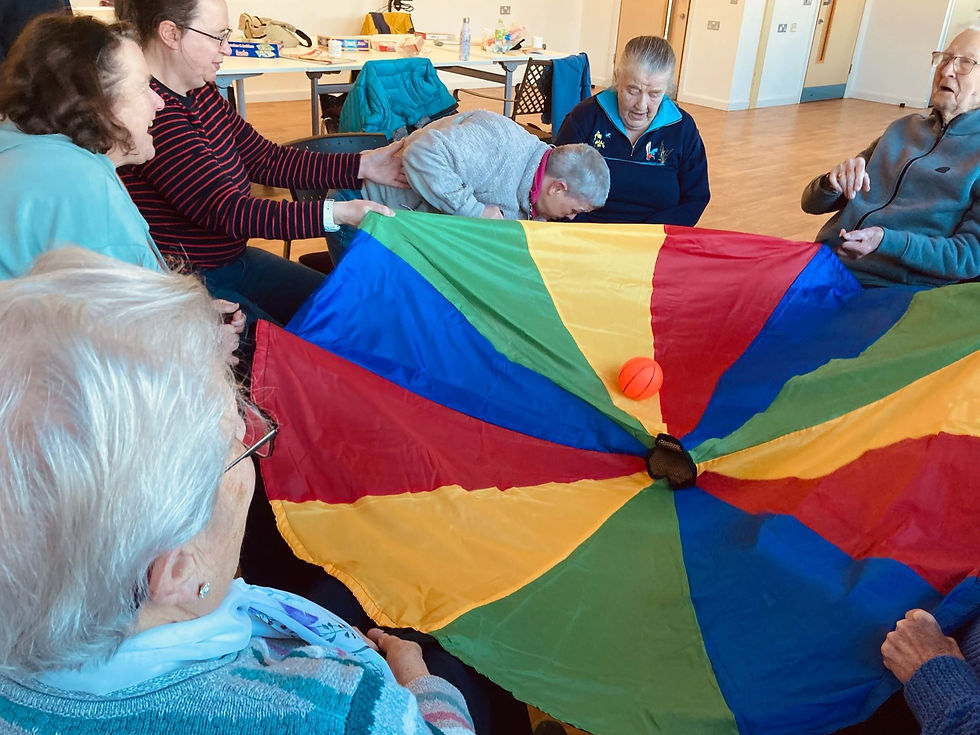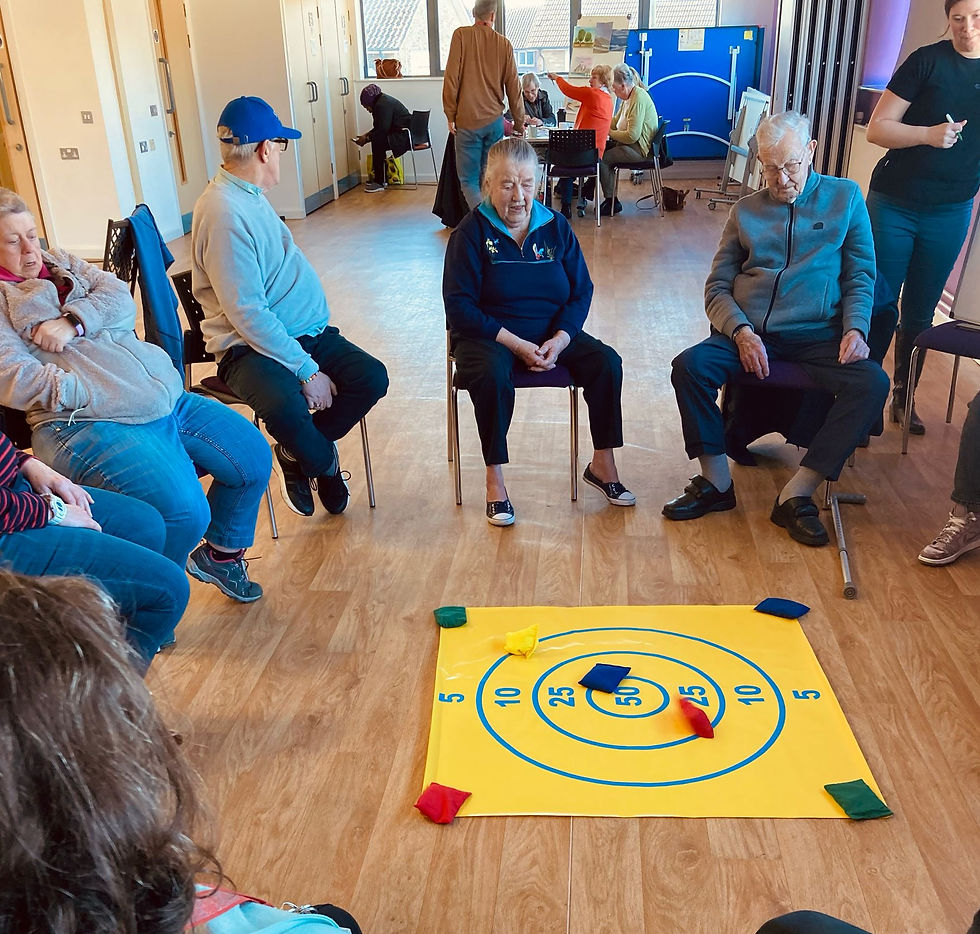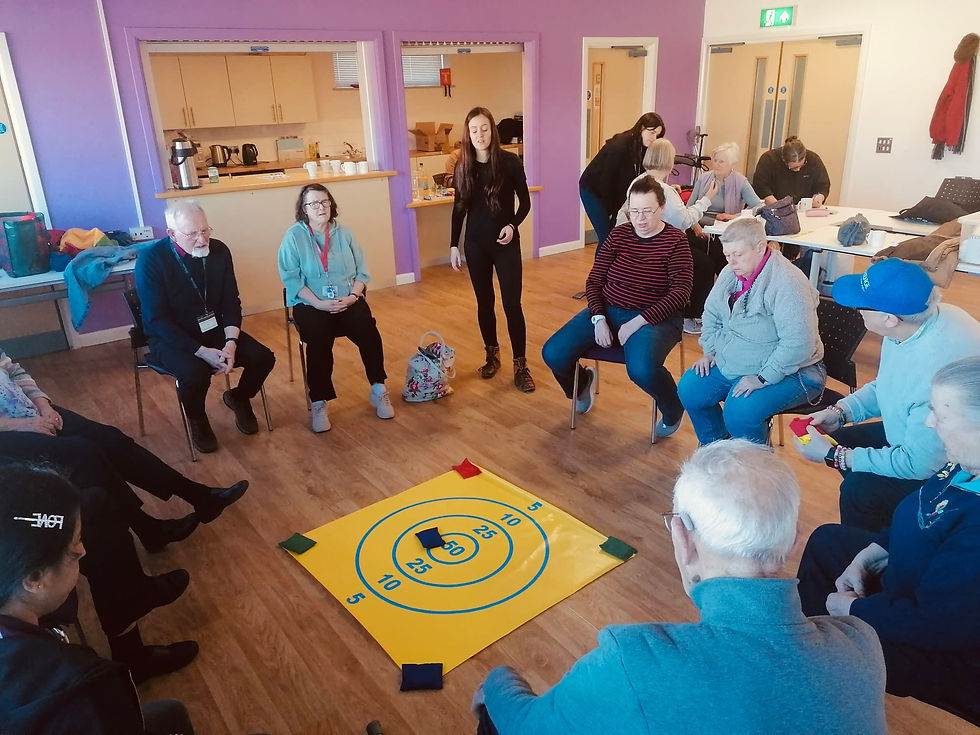Physical Activity Group at Llanrumey Hub
- CwmpasOT Community Interested Company
- Mar 5
- 2 min read
Moving Together: The Transformative Power of Physical Activity in Occupational Therapy
In occupational therapy, physical activity is much more than just exercise—it’s a dynamic tool that enhances physical, cognitive, and social well-being. By incorporating physical activities into therapy sessions, we empower individuals to reclaim their independence and improve their quality of life. Here’s how physical activity and teamwork are making a significant difference in OT:
Physical Benefits
Improved Mobility & Strength:Structured activities like stretching, balance exercises, and gentle aerobics help boost muscle strength, flexibility, and coordination. These improvements not only aid daily function but also help prevent falls and injuries.
Enhanced Fine Motor Skills:Engaging in activities that require precise movements—such as passing a ball or coordinating group exercises—can strengthen fine motor skills, which are vital for everyday tasks.
Cognitive & Emotional Advantages
Mental Stimulation:Activities that combine movement with problem-solving (e.g., obstacle courses or interactive games) can enhance cognitive functions such as memory, concentration, and decision-making.
Mood Enhancement:Physical activity releases endorphins, which can reduce stress, anxiety, and depression. This boost in mood creates a more positive outlook and better engagement in therapy.
Teamwork & Social Connection
Building Social Bonds:Group-based physical activities foster a sense of belonging. When clients participate together—whether in a cooperative game or a gentle group exercise—they form social connections that can combat isolation and loneliness.
Encouraging Mutual Support:Teamwork in therapy encourages clients to work together, celebrate achievements, and support one another. This collaborative spirit not only enhances therapy outcomes but also builds self-esteem and trust among group members.
Motivation & Accountability:When working as a team, individuals are more likely to push themselves and remain engaged. The positive energy of a group setting can make challenging exercises more enjoyable and help clients stay motivated over time.

Real-Life Impact
Consider a recent session where our OT group engaged in low-impact group exercises at a local community center. Clients were paired for balance exercises and teamed up for cooperative games that required coordination and communication. Not only did participants experience physical benefits, but they also reported feeling more connected and supported—a testament to the power of teamwork in achieving therapy goals.
In summary, incorporating physical activity into occupational therapy isn’t just about moving the body—it’s about moving together. By embracing both individual exercise and collaborative teamwork, we can create a more holistic, engaging, and effective approach to therapy that truly transforms lives.



Comments